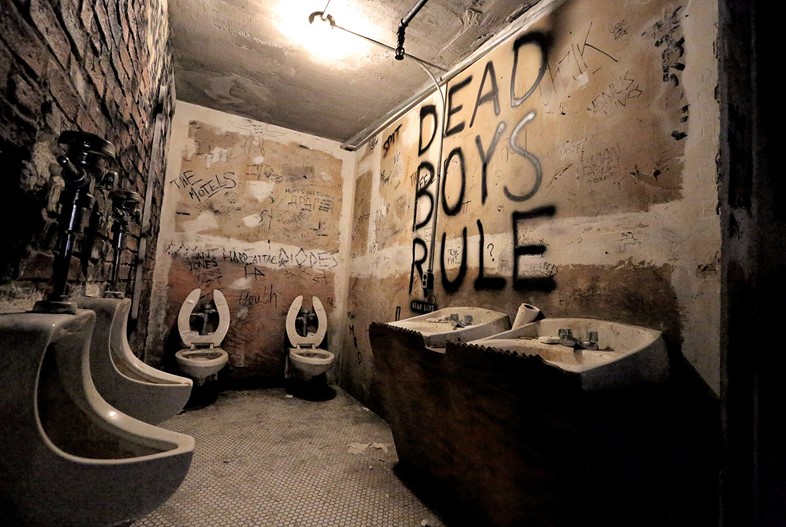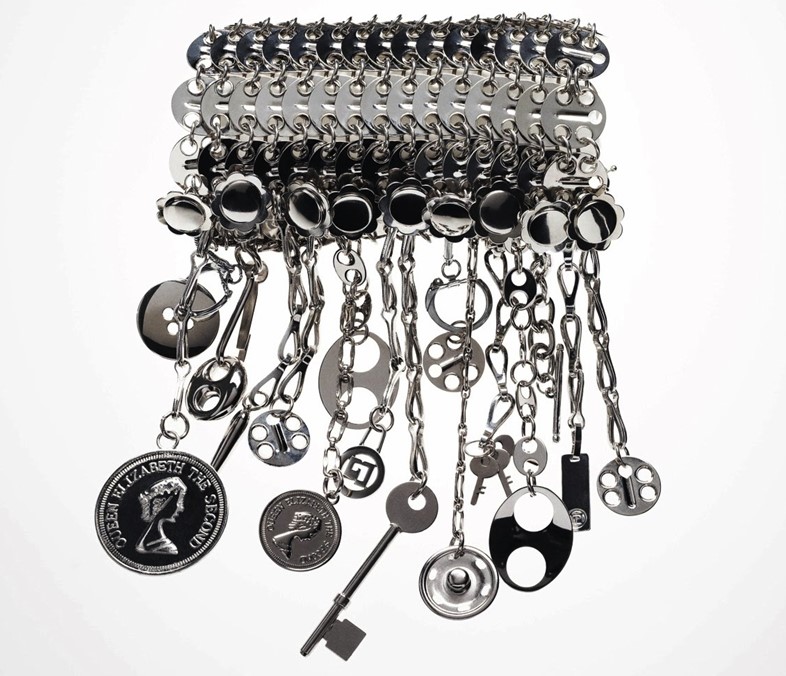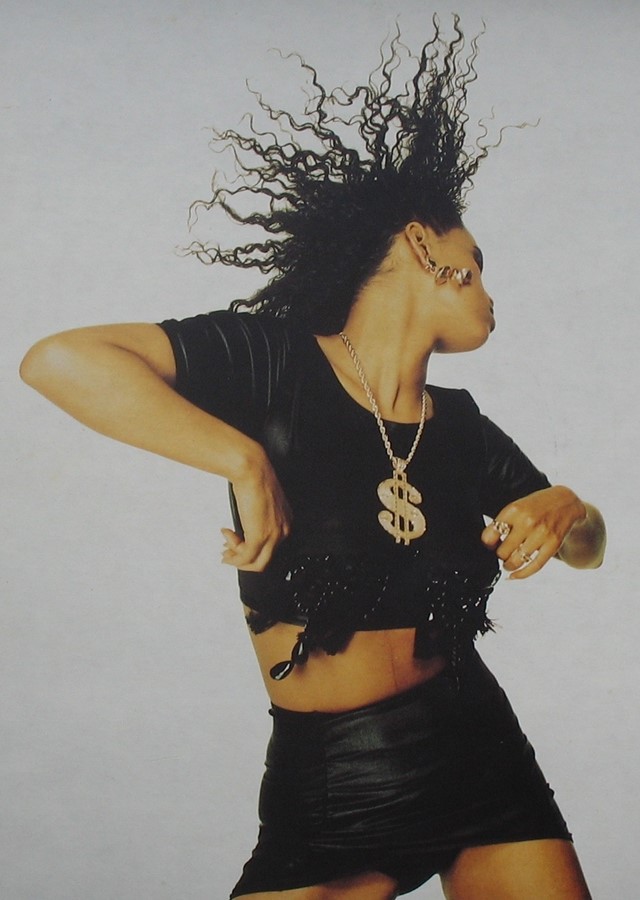Insiders speaks to legendary accessories designer and cult icon Judy Blame
From scavenging for found objects from the River Thames to make his beautifully unconventional bricolage jewellery to his visionary work as part of Ray Petri’s boundary-pushing Buffalo crew; the career of legendary jeweller and image-maker Judy Blame has been defined by the make-do-and-mend spirit of Punk. After running away from home in Devonshire at 17 to become a Punk rocker, Blame fell in with the emerging scene in Manchester (where he met the likes of Tony Wilson, Malcolm Garrett and Peter Saville) only to see Punk morph into the dress-up-and-pose peacocking tendencies of the New Romantics that crystallised around venues like Taboo and Heaven. It was there that Blame took to making jewellery out of bottle openers and plastic toys in order to make his Bodymap chemise dresses stand out from the crowd; eventually catching the eye of Antony Price who would commission him to work on his first catwalk show. After dressing Boy George in “everything but the kitchen sink” for the 1984 Grammys, Blame would also go on to help Neneh Cherry create her iconic look for Buffalo Stance and style Björk in tattered Maison Martin Margiela for the cover of Debut. His restless, magpie sensibilities straddle different disciplines and Blame has collaborated with both fashion’s highest echelons (Rei Kawakubo, Marc Jacobs at Louis Vuitton and Paco Rabanne) and the completely underground (House of Organza). And it was with the era-defining Buffalo fashion movement started by the late stylist Ray Petri that would go on to define the powerful fusion of high fashion and sportswear that’s taken for granted today.
And now after some time away, Blame is back and his work feels as relevant and modern as ever. With both Punk and the 80s club scene given museum shows this year, the spotlight has been thrust back on Blame’s iconic legacy (with the V&A show featuring his work). Not that Blame seems comfortable with this, “Well that’s just all part of that media machine isn’t it? Toilets at the Met exhibit – what does that have to do with Punk?” After nearly 40 years in the industry, the anger that fuels him creatively still burns bright – long may he burn.
You left home in Devon at 17 to become a punk rocker. What was exciting about those times?
It was, I suppose, a good life but I come from quite a straight family and I knew in my guts, when I was like 12 or 13, I was looking at other things; Bowie, Roxy Music. I was the kid stuck in the countryside with his record collection, which was everything because that was the only way you communicated with the world or found out about things. Music was really the thing that informed us. I had a lot of pressure from my parents to conform, where in fact I was ready to explode and not conform. All the things I liked that attracted me were from either the glittery side of life or the darker side of life. I kind of self-educated myself about art and music, and met these students from Exeter University who just turned me onto things that they knew I’d be interested in. So I was self-educating even though I was at school and then Punk happened and it was like a calling.

When you started going out to clubs, you customised your own jewellery because you were poor but you wanted to stand out. Do you think that DIY attitude still informs your work today?
Yes it does. I was never classically trained at anything. One of the important things I’ve learned about the way I approach things is I always do a lot of my thinking and creating on instinct. I don’t think that a diamond is better than a safety pin; to me it’s just a thing or a shape.

Do you think you still see that same kind of spirit today where people take so much care in how they look when they go out?
For the New Romantic, it was a sort of vanity but it was also a statement that you didn’t want to look like anyone else. I mean there are still people around that do that kind of thing. I mean now there’s still a lot of visually creative kids who have to do it on a small budget. Money isn’t a thing that holds back creative people. In fact, it can spoil it sometimes.
With Punk and the New Romantics and Club Kids, there aren’t movements like that anymore are there? Everything gets usurped by the mainstream so quickly.
Because of the shameless state of the mass-media and the gutter-press, I hope any movement nowadays stays underground until it’s ready to explode. If mainstream media get a sniff on it, it’s dead in a week. The thing about Punk and the New Romantics, was that it just started anyway. It didn’t have anything to do with anyone. With Punk, you didn’t want to be in a magazine, you just wanted to have a great time with like-minded people in the grottiest pub but you’d be watching The Fall or listening to The Slits. Then of course Malcolm being such a provocateur went “ping!” and used the Pistols, and co-operated with the media. Look what happened. With New Romantics, you just wanted to go to a club when there were people like you. Also, with the New Romantics, there were a lot of very talented fashion people who really fuelled that scene. It wasn’t so much about the music. The fashion people chose the music they wanted to listen to. It was all kept underground.
"With this 80s thing, to tell you the truth, I’m sick of all this fashion nostalgia. It’s happened, it was ages ago"
How did you get involved with Buffalo?
The fashion and the music business were always quite close so we fed off each other. For one, the musicians really dressed up and two, the designers wanted to work with the musicians because they knew they would wear it. Then, I met Ray Petri, Neneh Cherry and her husband Cameron, and also (photographer) Mark LeBon, they were all part of it. I ended up just hanging with them. The genius of Ray was that he foresaw all of that. Also, another thing that Ray did was using people of color or different ethnic backgrounds.
What are your memories of Ray?
Oh god I really miss him. Of course I miss a lot of people, as it was a mad time in the 80s for people disappearing. But he was just so cool to everyone. He didn’t have a fashion elitist bone in his body. All he thought was visual. He’d just like hanging out, going to shows and taking pictures. The music was always so cool; the people you met were so cool. He attracted that; he had that kind of light. He was also another one who was always introducing people to one another. The thing he taught was that getting dressed was all about the person, not really just the frock. I think up until I met Ray, I was just a shameless show off. In the way I dressed, I wanted attention, I overdressed in a way, but when I met Ray and went to a shoot with him, it was all about fine detail. What I learnt of Ray I guess was good taste.

With your work with Neneh Cherry and Björk, are you surprised by how iconic those images became?
The reason why those images have become iconic is because it’s all about the person. When you look at it, they do look cool but it’s not some big overblown outfit with someone stuck in the middle of it, which most pop stars are now. With Björk, it was just a little fluffy jumper that I nicked off Margiela. Neneh was the same, just a black bra, fake hip hop jewellery from World. You knew it was her. You’ve got to think about the model, picture, then the outfit – put all of those three together and then that picture doesn’t date.
"Some people understand what I’m on about, some people don’t. As long as you get some kind of reaction from it"
In terms of what you create, what are you trying to create? Is it beauty as you see it?
Well I love beauty but then all the things I’ve done have not been beautiful. The thing that keeps me going is communication, the communication of it. I mean my latest portrait is me in tar and feathers in a Galliano outfit because that’s my statement about fashion at the moment. That isn’t really a beautiful concept but you make it and twist it and that’s about what that communicates to people. Some people understand what I’m on about, some people don’t. As long as you get some kind of reaction from it and you’re not lazy with it.
Do you think we live in conservative times? The things you were rebelling against in the 80s are now treated with a reverence.
The thing that I worry about is how the media portrays things. The media invents conformity. With this 80s thing, to tell you the truth, I’m sick of all this fashion nostalgia. It’s happened, it was ages ago. It’s great to bring a book out about it because most of the people were really interesting. Though all of this is just a safe way of stopping people doing things now. People aren’t encouraged to be different anymore. Everything now is so safe! You go to the shows now and where’s the spark? Where’s the dream? Fashion promotion should really be about dreaming and changing.

How do you enjoy switching between working for big brands like Vuitton to smaller more personal projects?
Well I can honestly say, I still love what I do over forty-odd years of doing it. Not everyone can say that. I’m privileged to be able to leap around like that. I love jumping around – it keeps it fresh for me.
What projects are you working on that are exciting you?
Musically, Neneh’s just made a fabulous album so we’re thinking about how that should go. I always still make the jewellery even if it’s in a very limited run. I haven’t been very well in the last three years so I’ve been restoring myself. Creativity has come back to save my arse yet again. I’m also thinking about doing my own book explaining my little journey. I did hold back for a while but I just want to get rid of the past. So I need to do my book as a little release.
Club to the Catwalk: London Fashion in the 1980s opens at the V&A on July 10. The exhibition's accompanying publication 80s Fashion: From Club to Catwalk by Sonnet Stanfill is available now.
